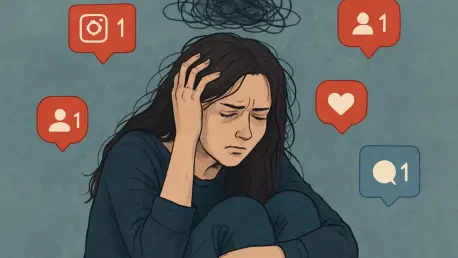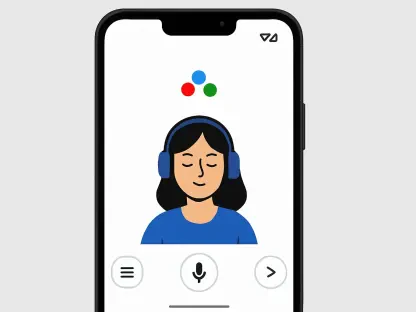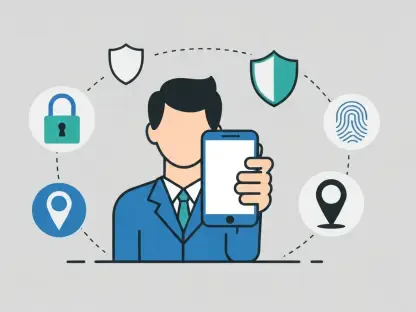In an era where digital platforms dominate daily interactions, university students are increasingly caught in a web of social media that can both connect and harm. A groundbreaking study published in the International Journal of Mental Health and Addiction this year reveals a troubling link between excessive social media use and mental distress among young adults in Indonesia and Taiwan. This research goes beyond surface-level observations, delving into how specific patterns of online behavior correlate with anxiety, depression, and stress. It challenges the notion that all screen time is equal, instead focusing on the qualitative aspects of digital engagement—those compulsive habits that disrupt emotional balance and daily functioning. By comparing two culturally distinct regions, the findings underscore a global issue: the mental health of students is at risk when social media use becomes problematic. This exploration sets the stage for a deeper look into how digital habits, cultural contexts, and platform designs intersect to shape psychological well-being in the modern age.
Exploring the Psychological Impact of Digital Habits
Broader Patterns of Platform Overuse
The scope of social media overuse among students often spans multiple platforms, creating a pervasive strain on mental health. This generalized overuse, characterized by constant switching between apps and an incessant need for updates, has been strongly tied to heightened levels of anxiety and depression. Students caught in this cycle frequently experience stress from the pressure to maintain an online presence, often comparing themselves to idealized images and lifestyles they encounter. The cognitive load of managing notifications, messages, and posts across various networks adds another layer of exhaustion, leaving little mental space for academic focus or personal reflection. This relentless digital juggling act disrupts sleep patterns and diminishes overall well-being, painting a clear picture of how broad overuse can erode psychological resilience over time.
Moreover, the emotional toll of generalized overuse extends beyond mere fatigue to deeper issues of self-worth. Social comparison, a common byproduct of scrolling through curated feeds, often leaves students feeling inadequate or isolated despite being hyper-connected. The need for validation through likes and comments can become an unhealthy obsession, driving compulsive behaviors that interfere with real-world relationships. This phenomenon is particularly pronounced among university students, who are already navigating the pressures of academic performance and social integration. The study highlights that this type of overuse doesn’t just increase stress—it fundamentally alters how students perceive themselves and their place in the world, creating a vicious cycle of distress that’s hard to break without targeted intervention.
Specific Challenges with Video Platforms
When it comes to platform-specific overuse, YouTube stands out as a unique contributor to mental distress among students. Unlike the interactive nature of other social media, YouTube often fosters passive consumption, where users lose hours to algorithm-driven content tailored to their viewing history. This can lead to emotional disengagement, as students become absorbed in a stream of videos that distracts them from responsibilities and real-life interactions. The study points out that this immersion often results in feelings of emptiness or disconnection, as the lack of active engagement fails to provide the social rewards found on other platforms. Instead, it traps users in a loop of content that may not even align with their interests, amplifying a sense of wasted time.
Additionally, the psychological impact of prolonged YouTube use includes a tendency toward rumination, where students dwell on negative thoughts triggered by certain content. The platform’s recommendation system can inadvertently expose users to videos that reinforce anxiety or sadness, especially if they’ve previously watched related material. This passive exposure differs markedly from the active social comparison seen in generalized overuse, yet it carries its own risks, such as diminished motivation and a skewed perception of reality. For many students, hours spent on YouTube become a form of escapism that ultimately heightens stress rather than relieving it. The research emphasizes that understanding these platform-specific effects is crucial for addressing the nuanced ways digital habits impact mental health.
Cultural Dimensions of Online Behavior
Social Pressures in a Connected Society
Cultural norms significantly shape how students engage with social media, as seen in the distinct patterns observed in Indonesia. In a society that prioritizes collective harmony and strong interpersonal ties, there’s an unspoken expectation to remain active across multiple platforms to maintain social bonds. This drive often leads to generalized overuse, where students feel compelled to respond to messages, comment on posts, and stay updated to avoid being perceived as distant or uncaring. The pressure to conform to these social expectations can heighten anxiety, as the fear of missing out or disappointing peers becomes a constant burden. The study reveals that this cultural backdrop amplifies the mental strain of overuse, making it a more widespread issue in such communities.
Beyond social obligations, the collectivist mindset in Indonesia also fuels a cycle of comparison and validation-seeking behavior online. Students often measure their worth by their digital interactions, equating popularity on social media with personal success. This cultural lens intensifies the emotional impact of generalized overuse, as disengaging from platforms feels like severing vital connections. The resulting stress and depression are not just individual struggles but are tied to broader societal values that equate online presence with social standing. These insights from the research highlight the importance of considering cultural context when addressing the mental health challenges posed by digital overuse, as solutions must resonate with local values to be effective.
Individualistic Trends and Focused Engagement
In contrast to Indonesia’s collective focus, Taiwan’s more individualistic culture shapes a different pattern of social media use among students. Here, the emphasis on personal achievement and autonomy often leads to more selective engagement, with a notable tilt toward specific platforms like YouTube. This preference is partly driven by Taiwan’s advanced technological infrastructure, which supports seamless access to high-quality content, making solo consumption an appealing pastime. The study indicates that Taiwanese students are more likely to spend hours immersed in personalized video streams, reflecting a cultural tendency to prioritize individual interests over group interaction. This focused overuse, while less socially driven, still poses risks to mental health through isolation and overconsumption.
Furthermore, the individualistic nature of Taiwanese society can exacerbate the emotional fallout from platform-specific overuse. Without the buffer of strong communal ties, students may feel more detached when their digital habits lead to disengagement from real-world activities. The research points out that prolonged YouTube use in this context often correlates with feelings of loneliness, as passive viewing replaces meaningful interactions. Unlike the anxiety tied to social pressures in Indonesia, the distress here stems from a lack of connection and purpose, highlighting how cultural frameworks influence not just the type of overuse but also its psychological consequences. Addressing these issues requires an approach that respects the value placed on independence while encouraging healthier digital boundaries.
Pathways to Digital Well-Being
Personalized Approaches to Mental Health Support
Tackling the mental health challenges linked to social media overuse demands more than generic advice about reducing screen time. The research advocates for personalized interventions that account for the specific nature of a student’s digital habits, whether they’re caught in generalized overuse across platforms or fixated on a single app like YouTube. For instance, cognitive-behavioral strategies can help address the compulsive need for validation that drives anxiety in broad overuse, while structured digital detoxes might break the cycle of passive consumption tied to video platforms. Tailoring these approaches ensures that the root causes of distress are targeted, rather than applying a one-size-fits-all solution that may miss the mark.
Additionally, mental health professionals should integrate assessments of social media use into their evaluations to better understand a student’s psychological state. By identifying whether distress stems from social comparison, cognitive overload, or emotional disengagement, clinicians can design interventions that resonate with individual experiences. This might include teaching mindfulness techniques to combat rumination triggered by algorithm-driven content or offering support groups for students struggling with online validation. The study emphasizes that such customized care not only addresses immediate symptoms but also builds long-term resilience against the pressures of digital life, paving the way for sustainable mental health improvements.
Building Systemic Change Through Education and Policy
Educational institutions hold a pivotal role in mitigating the mental health risks of social media overuse by equipping students with practical tools for digital balance. Universities can implement digital literacy programs that teach young adults how to set boundaries, recognize problematic habits, and prioritize offline well-being. Workshops focusing on time management and critical thinking about online content can empower students to engage with social media mindfully, reducing the likelihood of anxiety or disengagement. The research suggests that embedding these skills into academic curricula could foster a generation better prepared to navigate the complexities of the digital landscape without sacrificing mental health.
On a broader scale, policy-level action is essential to address the systemic factors contributing to problematic use. Governments and tech companies must collaborate to redesign platforms in ways that prioritize user well-being over endless engagement. Simple changes, like adjusting algorithms to limit compulsive content loops or introducing built-in reminders for breaks, could significantly reduce the risks of overuse. The study calls for holding tech giants accountable for the mental health implications of their designs, urging regulations that balance innovation with ethical responsibility. Reflecting on these past efforts, it becomes evident that only through such combined educational and policy initiatives can lasting progress be achieved in safeguarding student mental health against the perils of the digital age.









